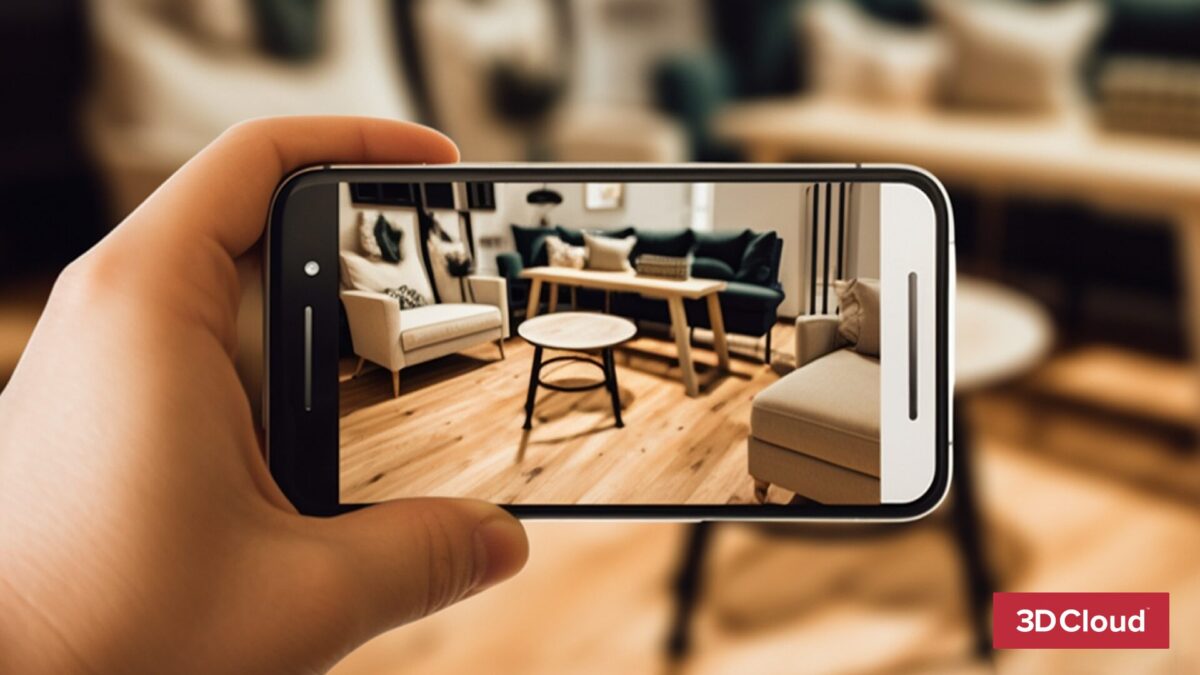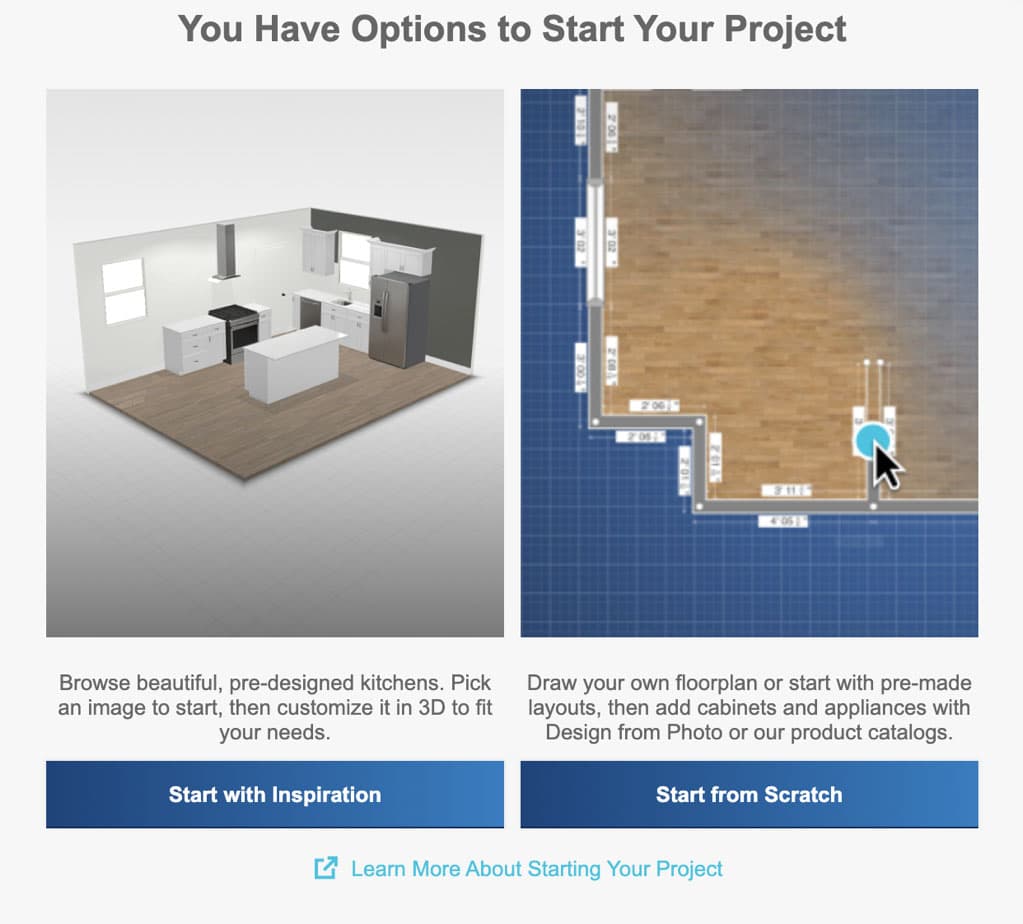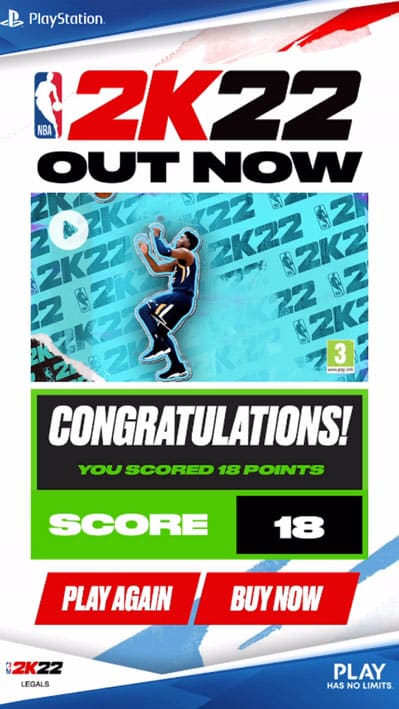
This article lays out the best uses of Web-based artificial reality (WebAR) technology. It gives examples to help better understand the potential for this technology. We’ll look at WebAR examples in retail, food and beverage, entertainment, home improvement and more.
Inside this article:
Best WebAR Examples
WebAR is a technology that allows people to experience AR through a Web browser. The best business examples of WebAR share the following traits:
- It enhances the customer experience.
- It increases customer engagement.
- It delivers valuable business intelligence.
- It’s easy to implement and easy to use.
WebAR is becoming popular in many industries because it’s accessible and modernizes the customer experience. Unlike app-based AR, WebAR content doesn’t require downloading additional applications or using special hardware such as headsets or glasses.
Top Retail WebAR Examples
WebAR is a popular way of enhancing the shopping experience in the e-commerce and retail industries. It’s proving to be an effective way to sell more products, increase customer loyalty and reduce customer returns.
Here are some of the best examples of WebAR in retail:
- Jerome’s Furniture WebAR Catalog:
Powered by 3D Cloud‘s solution, Jerome’s Furniture customers can visualize furniture and other products in their homes using advanced 3D models. Using markerless WebAR technology, customers can see how those products fit their space.
- ModiFace In-Store WebAR:
ModiFace Web-based AR technology uses its custom AR mirror software with in-store smart mirrors to enhance the customer experience. Sephora customers can instantly sample more than 20 cosmetic colors and preview different eye shadow textures with the Beauty Mirror. This example shows how companies with brick-and-mortar locations, like Sephora and MAC, use WebAR, advanced AI and smart hardware to increase sales and reduce customer returns.

- Maybelline Virtual Try-On Makeup:
The Virtual Try-on feature, created by ModiFace, uses advanced Web-based AR such as face-tracking algorithms and 3D modeling to apply virtual cosmetics to pictures of your face. With Maybelline Virtual Try-on technology, you can sample different makeup shades virtually using a Web browser and your phone’s camera. Before purchasing, you can explore how Maybelline products like eyeliner and lipstick look on your face.

Top Fashion WebAR Examples
WebAR enables fashion retail firms to more clearly visualize clothing online before buying. We chose innovative examples that help visually engage customers. Here are some of the best uses of WebAR by fashion brands:
- Kate Spade WebAR Window Display Is the Bee’s Knees
Kate Spade launched its 2021 summer collection with an immersive Web-based AR experience that blended fashion, touchless WebAR technology and digital 3D media. As people window-shopped a summer-themed fashion display from outside its downtown New York store, they could launch an immersive AR experience using a QR code and their phone camera. The experience featured live-action bees that interacted with users through the window display.

- Burberry WebAR Search Experience
Burberry launched a new Web-based AR shopping tool that lets consumers experience its products in their physical environment. Using Google Search technology and 3D product modeling, the customers can see an AR version of their Burberry product shown at scale through their mobile device. The purpose is to simulate an in-store shopping experience and enable online shoppers to compare products against other real-world objects in their environment from the search feature of a Web browser.

- ASOS WebAR-Powered Virtual Fitting Room
Fashion retailer ASOS is the first retailer to offer a full-fledged Web-based AR tool that allows customers to visualize clothing on different body types. With the See My Fit tool, ASOS’s customers shop for various dresses in different sizes using WebAR technology to simulate a view of the product on numerous models from a desktop or mobile Website. Online shoppers see how multiple sizes and cuts of a product fit their body type without leaving their bedroom.

Top Food and Beverage WebAR Examples
Many top food and beverage brands embrace Web-based AR to enhance the customer experience. WebAR creates opportunities to engage with customers before and after consuming a food or beverage product.
Here are some of the best examples of WebAR for food and beverage:
- WebAR Gift Cards
Uptown Networks launched a digital Web-based AR gifting system that allows restaurants to connect with customers through an interactive gift card experience. Customers scan a QR code on the restaurant menu to launch Uptown Gifts®. They can bundle menu items into a digital gift card delivered with a unique WebAR-enabled 3D presentation of menu items when the recipient opens the gift.

- Patrón Spirits and User-Generated AR
Patrón created a first-of-its-kind digital 3D gift wrapping experience. Customers design their gift wrapping with photos, text and stickers to transform a bottle of spirits into a custom product using a 360-degree AR experience on a customized Website. The Web-based AR experience lets users create 3D content to wrap a bottle of tequila.

Top CPG WebAR Examples
Consumer packaged goods (CPG) marketing relies on visual elements such as text and graphics to engage customers. WebAR creates a more dynamic method to help customers engage with product packaging.
Here are some examples of the best CPG WebAR experiences:
- Almond Breeze Farm-To-Table WebAR Experience
Almond Breeze launched a Web-based AR journey that relates a farm-to-table story featuring Almond Breeze growers and ingredients. Customers scan the on-package QR codes on almond milk and almond yogurt with their mobile devices. Customers without a CPG package can visit a designated Website to view an immersive WebAR story featuring a tour of a miniature AR orchard.

- Animated WebAR CPG Experience Increases Customer Engagement
Ottogi Co, Ltd. is one of the largest food manufacturers in South Korea. The company partnered with Letsee on a WebAR CPG marketing campaign to increase customer engagement with one of its core products. Customers scan the QR code on different packages of Ottogi noodles to launch a Web-based AR experience with animated emojis, various themed backgrounds and a screenshot feature to increase engagement through social sharing.

- Gamification of Breakfast with WebAR
General Mills launched two cream-filled breakfast cereals called Fillows with an interactive Web-based AR mini-game. The CPG marketing campaign allowed customers to scan a QR code on the Fillows cereal box at home or in-store and play a Pac-Man-inspired WebAR game using the product packaging.

Top Home Improvement WebAR Examples
WebAR for home improvement delivers a more realistic sense of how a product will enhance a home before purchasing high-value items like appliances. You can create 3D models of products and overlay them in your home.
The home improvement market provides clear examples of how WebAR blends the digital world with the physical world to enhance the shopping experience. It’s the ultimate home improvement visualization tool.
Here are some examples of the best home improvement WebAR experiences:
- 3D Cloud 3D Room Planner Enables Customer-Driven Interior Design
American Furniture Warehouse (AFW), a leading U.S. furniture retailer, launched a Web-based AR room planning design tool powered by 3D Cloud. The tool lets customers and AFW associates leverage proprietary 3D Cloud Design from Photo technology and work on room design by dragging and dropping AFW furnishings from photos into a WebAR-simulated 3D room from a Web browser.
- Lowe’s Online Kitchen Planner
Lowe’s Web-based Kitchen Planner, powered by 3D Cloud, lets customers create custom kitchen designs from scratch or select predesigned layouts for free using 3D Cloud’s WebAR OnDemand and Design from Photo. Customers can save and download their creations, work virtually with a Lowe’s design specialist and buy products online based on the rendering.

Top Entertainment WebAR Examples
Through technology, the entertainment industry brings magic to the screen. The industry has embraced WebAR technology such as immersive portals to engage audiences and tell more dynamic stories.
Immersive Portals
Web-based 3D immersive portals are digital experiences that show a different world view with AR. These immersive portals use other WebAR elements, such as computer-generated images (CGI), live video and 3D-rendered objects or images.
The best WebAR examples in entertainment show more than just a great concept. They’re also proof that companies use this technology to deliver real value. Each of the following examples illustrates how WebAR is pushing the boundaries of digital engagement in entertainment:
- NBA 2K22 WebAR Game:
NBA 2K video game developer Visual Concepts joined with Hoopla Digital to create an immersive WebAR mini-game announcing the release of the latest NBA 2K franchise title. The Web-based game uses a 3D AR engine to create realistic basketball movement. You shoot a basketball at a hoop overlaid against a view of your physical environment until the buzzer sounds.

- The Met Museum WebAR Exhibit:
Met staff members found new ways to share their knowledge and expertise using Web-based AR technology. The museum’s imaging department uses WebAR to bring one of its iconic sculptures to life. This island deity sculpture is viewable in full 3D through a Web browser and iOS-compatible device. The experience includes a guided audio narration of the wooden ceremonial stand by a Met curator.

- NBC Universal WebAR Promotional Content:
NBC Universal created a WebAR promotional experience for the award-winning war movie 1917. “Into the Trenches“ lets you explore a set from the film through Web-based AR that replicates a one-mile stretch of a wartime trench. Other examples of award-winning films promoted through WebAR experiences include Spider-Man: Into the Spider-Verse, Avengers: Infinity War and Ready Player One.
Top Automotive WebAR Examples
WebAR allows you to add interactive 3D elements to any Website, making it a great tool for the high-tech automotive industry. You can explore new features and search for cars using AR to enhance the experience.
Whether you’re shopping for a new vehicle or just learning about the latest technology, WebAR technology can enhance customer engagement and improve the overall customer experience.
Here are some of the top automotive WebAR examples:
- Lamborghini Huracán EVO RWD Spyder Experience:
Lamborghini used WebAR technology for the virtual launch of the Huracán EVO RWD Spyder. When you visit the landing page on Lamborghini’s Website on your Apple iOS device, you scan a QR code. The code launches the application to your browser, and you can explore the vehicle’s open-top design and interior from your living room or garage for an immersive Web-based AR experience.

- Infiniti QX55 Carigami Experience:
Vehicle maker Infiniti used the QX55 Carigami experience as a campaign to target customers who couldn’t attend the Auto Shanghai car show. The Web-based experience lets you make origami versions of the new QX55 model using WebAR. You download AR-animated diagrams of paper-folding instructions from a Web browser on your phone to craft a digital origami vehicle.

- Toyota Rav4 WebAR Basketball Game:
Toyota’s “Rav4 for 4” is a Web-based AR experience that lets users experience the new Toyota Rav4 and play a virtual basketball game. After learning more about the car with the WebAR content, an application launches a basketball game where attendees shoot four-point shots before time expires. During a live basketball game, attendees pointed an iPad at a Rav4 to trigger Web-based AR content for specific areas of the vehicle.

What Can We Learn from the Top WebAR Examples?
WebAR technology shows value across various industries and multiple use cases. There’s a place for it wherever you want to keep customers engaged longer, with interactive experiences that enhance digital marketing efforts.
The examples here represent a small sample of the overall AR space. The takeaway is that there’s a market for AR developers, digital-first companies and tech-savvy consumers to collaborate and continue pushing WebAR adoption toward the mainstream.
WebAR OnDemand from 3D Cloud
3D Cloud is the leading provider of 3D content for the furniture and home improvement.. Our WebAR OnDemand framework simplifies the process of creating and managing 3D assets and integrates easily with any e-commerce platform. By eliminating the need to pre-render and manage all the configurations for each product, we make it easier for your customers to experience the power of WebAR.

























